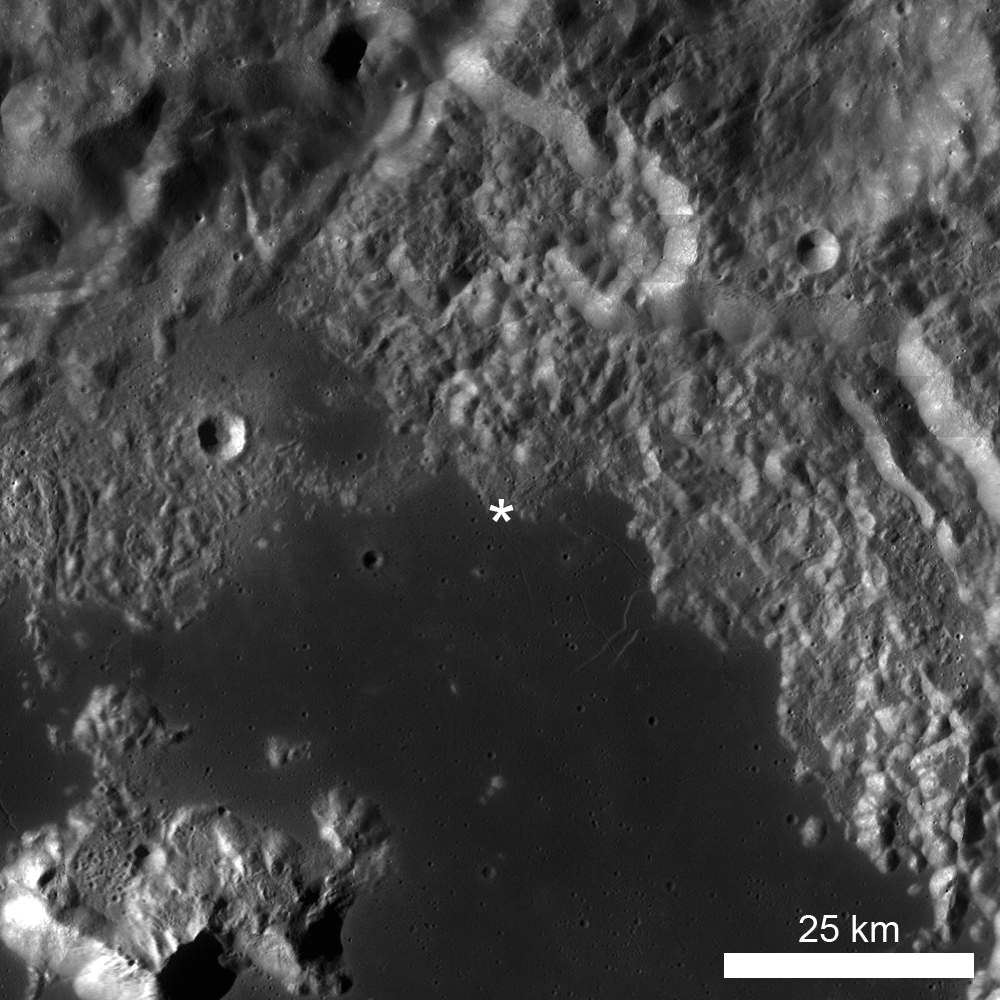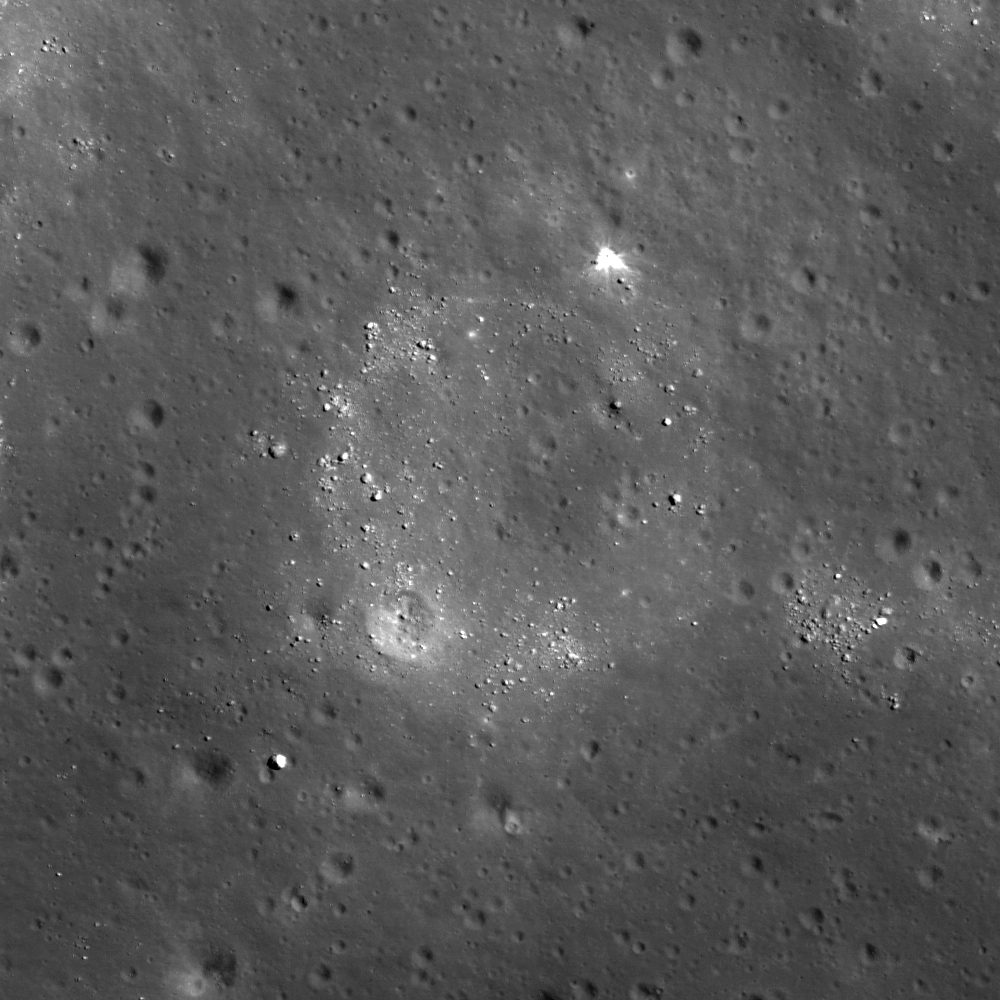
Tsiolkovskiy crater is a stunning example of a complex crater and is located on the farside (185 km diameter; 20.46°S, 129.06°E). Many geological features are observed within and around this impact crater, including a central peak, terraced walls, extensive ejecta, and a partially mare-filled floor. Tsiolkovskiy is an experiment in mare basalt flooding that is frozen in time and contains one of only a few mare deposits on the lunar farside. When we usually think of mare basalts, we mentally picture the vast nearside basalts, probably because we see them so clearly during a full Moon. These nearside basalts fill (or just nearly fill) the large impact basins that formed early in the Moon's geologic history, but the basalts that flooded Tsiolkovskiy (as well as those that formed Mare Moscoviense and Mare Orientale, for example) only partially flooded these farside basins. Thus, we can use these basins to study the geology of the farside mare deposits and the timing and extent of volcanism on the lunar farside.
Because substantial lateral mixing of materials on the Moon is limited, the boundary between the mare and the highlands within Tsiolkovskiy crater is particularly obvious. In the opening image, the high-reflectance highlands material in which Tsiolkovskiy formed is embayed by the lower-reflectance mare basalt. The area of the crater floor flooded by basalt is smooth and has low reflectance while the central peak, crater walls, and portions of the floor remain relatively unchanged except for the accumulation of small impacts (meters to ~5 km diameter) over geologic time.
However, the boundary between the highlands and the mare in Tsiolkovskiy is not so well defined at 60 cm/pixel in the LROC NAC images. Why is this the case? To answer, we must consider the way material moves on the Moon. Earlier we said that substantial lateral mixing on the Moon is limited, which is true. Impacts excavate material that is moved laterally, thus mixing local materials. With enough impacts, the albedo differences between highlands and mare will blur and eventually disappear. The fact that we see rays extending out long distances from Copernican-aged impacts show that lateral mixing occurs over great distances. So why can we still see the highlands-mare boundary so sharply in the WAC images? Close examination of that same boundary in the NAC images shows the boundary to be not so sharp. At the scale of the NAC, you can see that impact cratering is slowly blurring the boundary. Have you experienced this effect in your travels here on Earth? Perhaps you have planned an adventure using a geologic map or a map based on satellite images or airplane photography only to find that the well-defined boundary you noticed on the map is not so easy to spot on the ground. If you haven't, well, perhaps it is time to plan your next adventure!
Prowl around the mare-highlands boundary in Tsiolkovskiy crater in the full LROC NAC image!
Related Posts: Moon Seen From the East
Mare Filled Tsiolkovskiy Crater
Published by Lillian Ostrach on 28 September 2011
